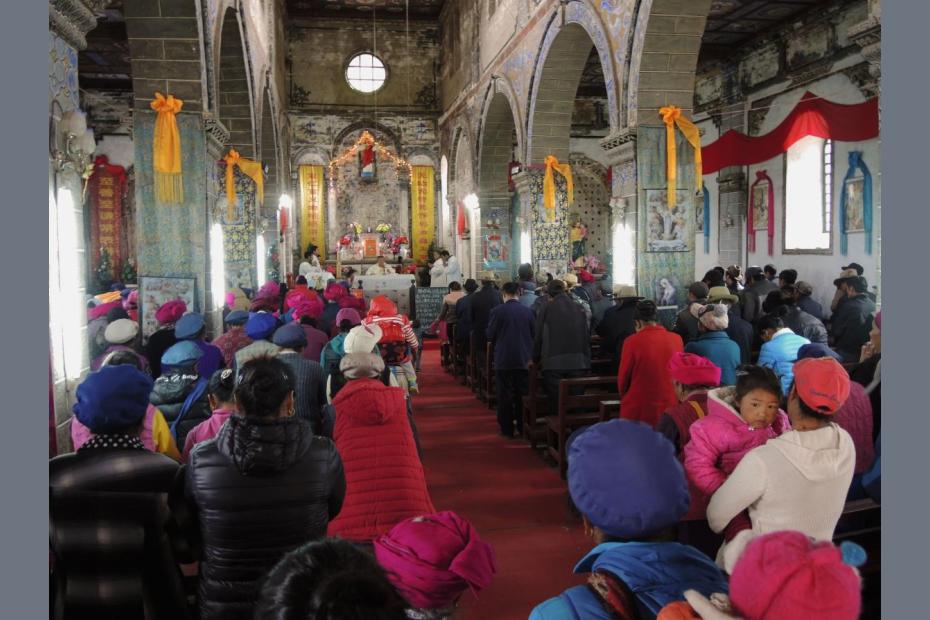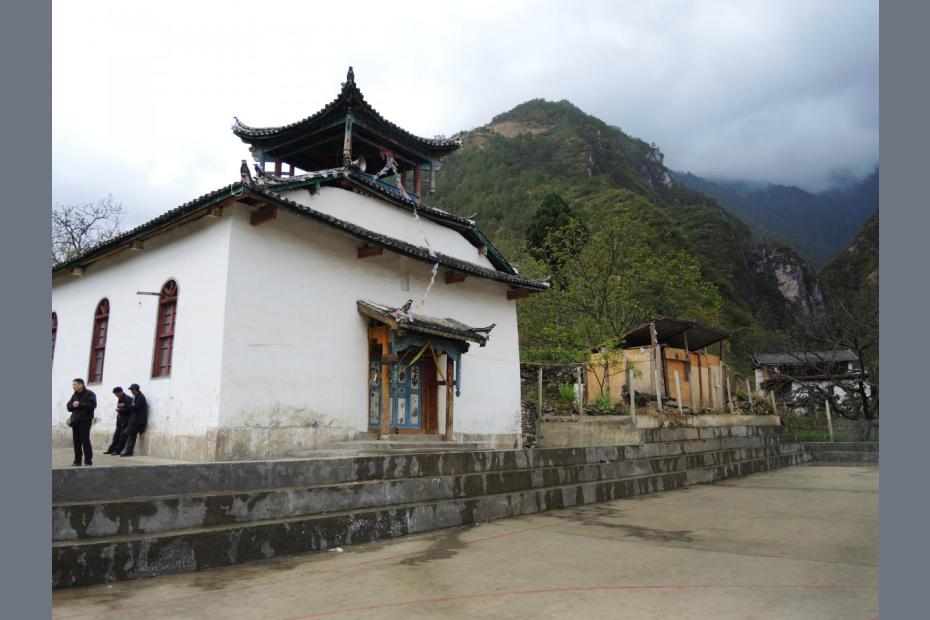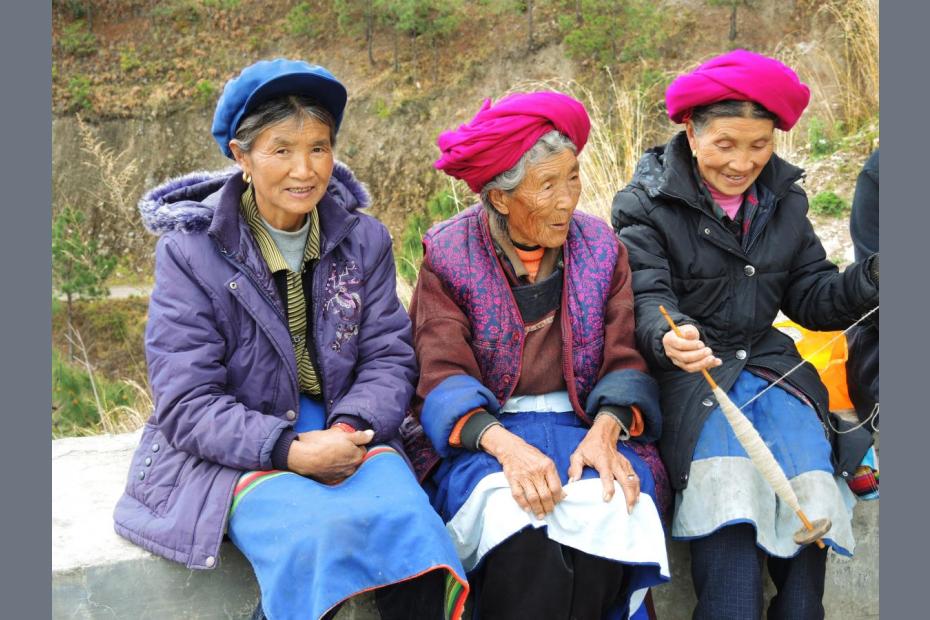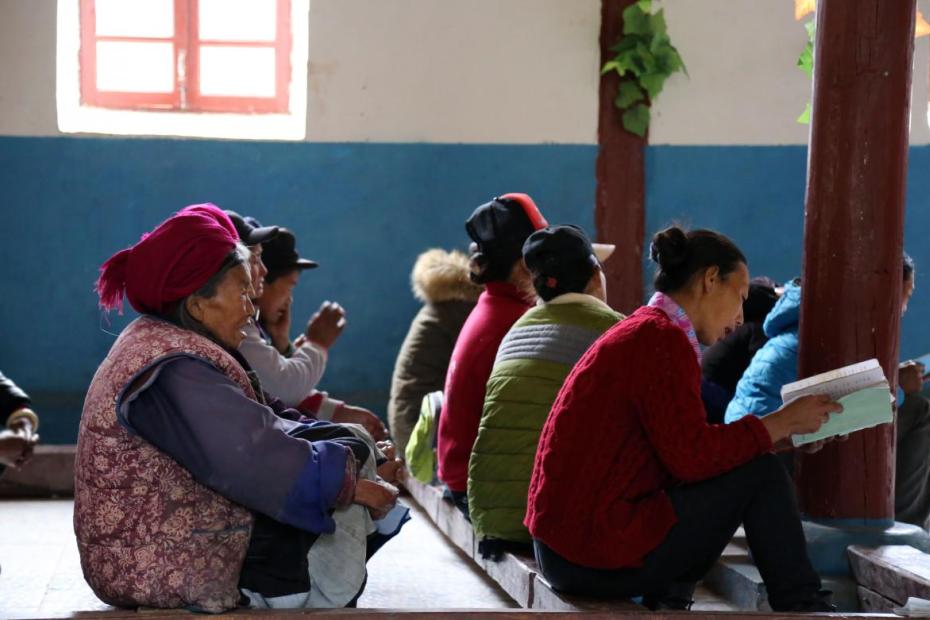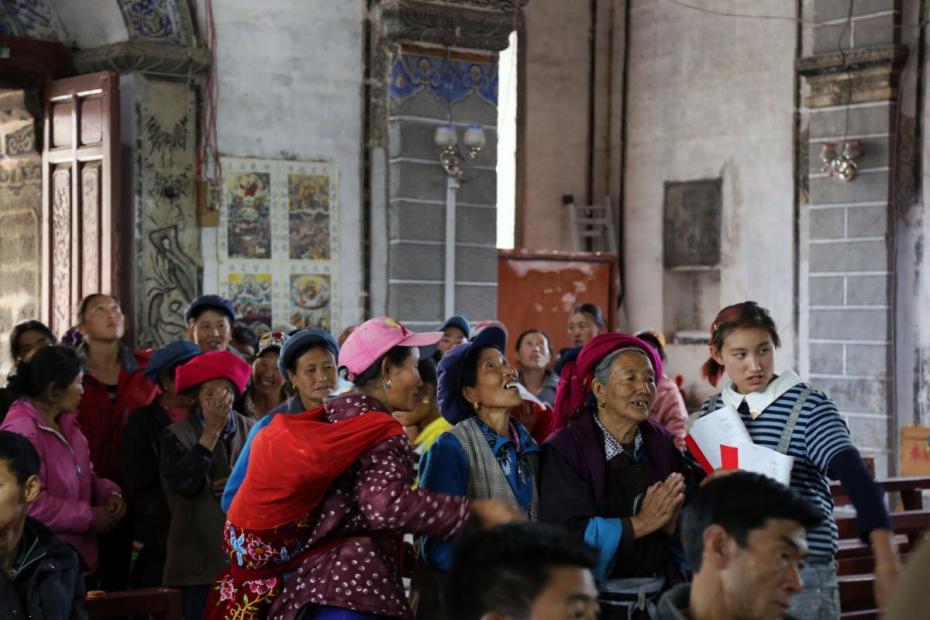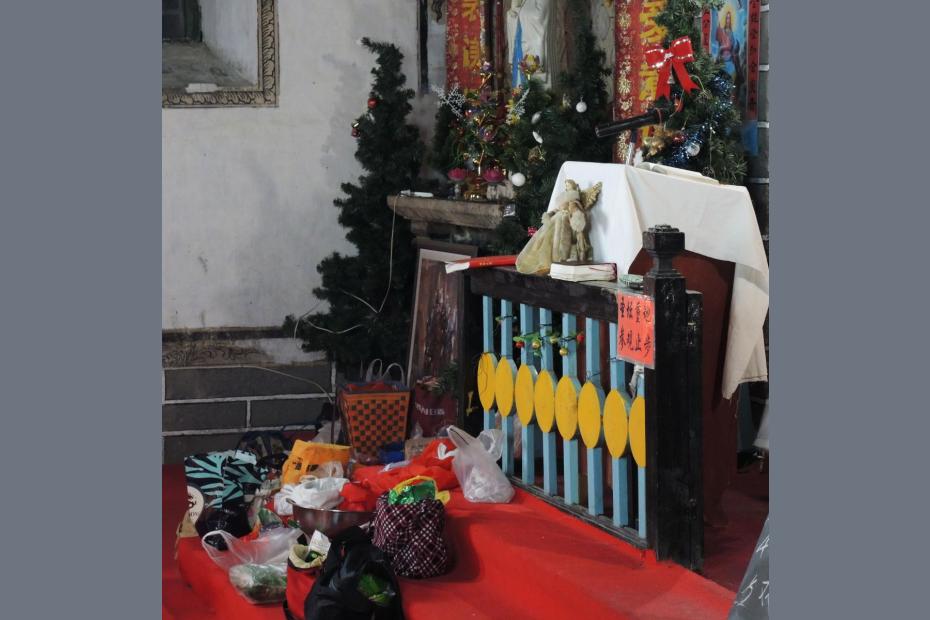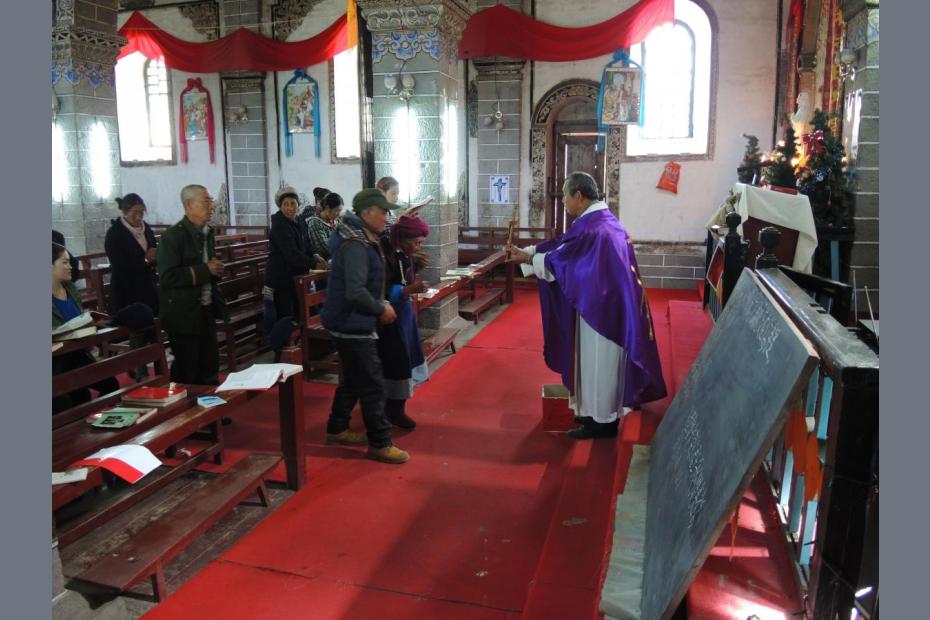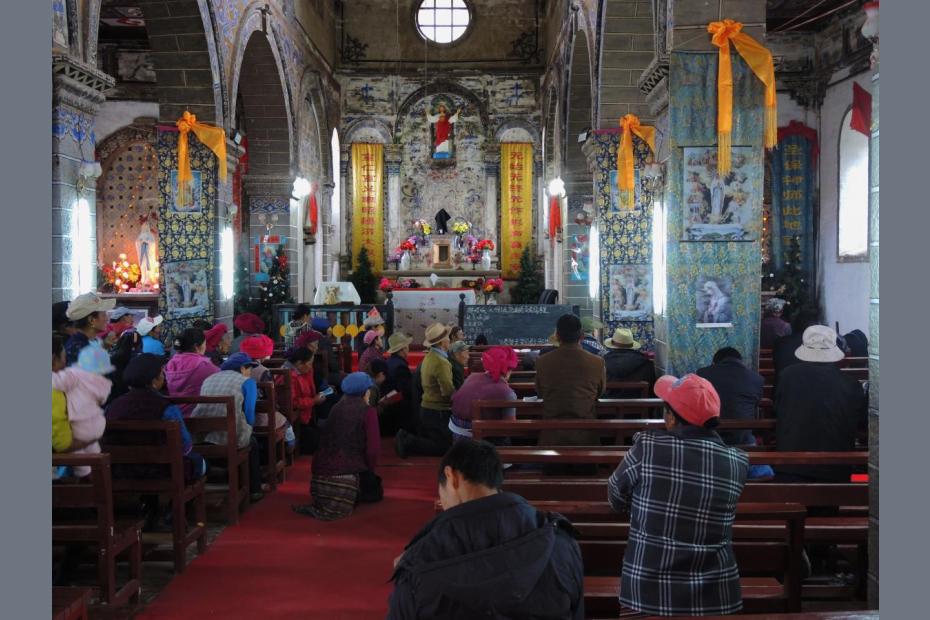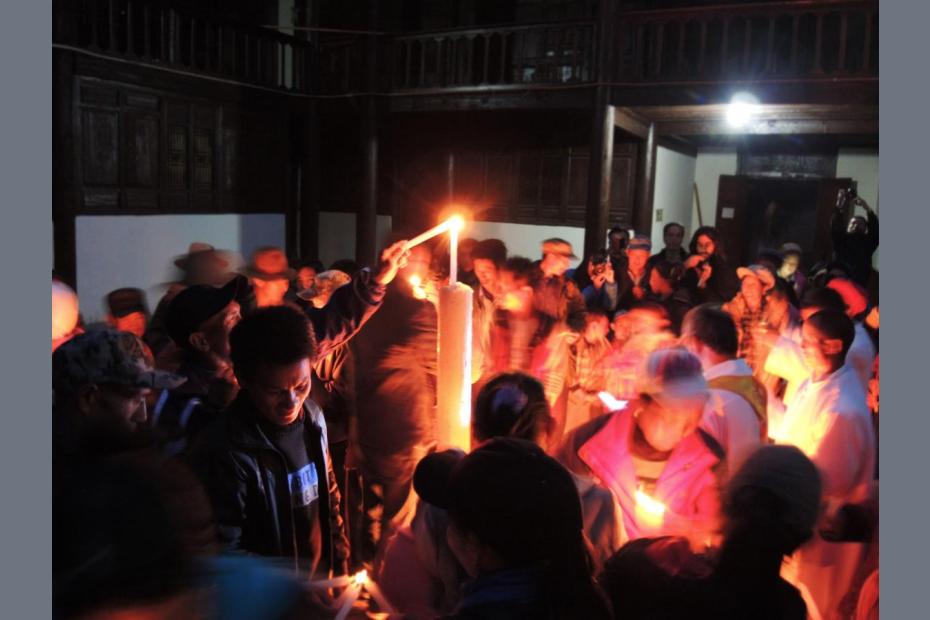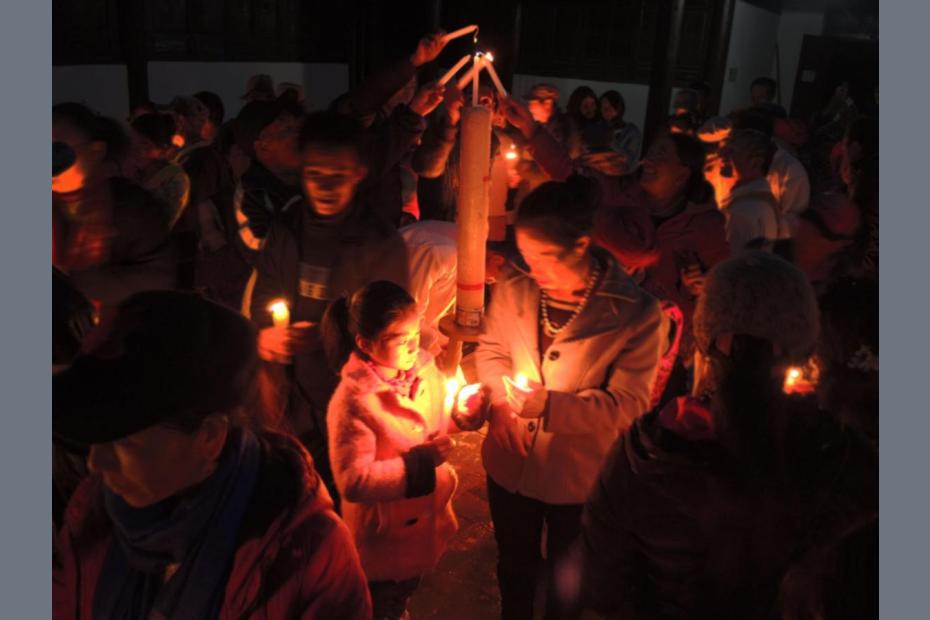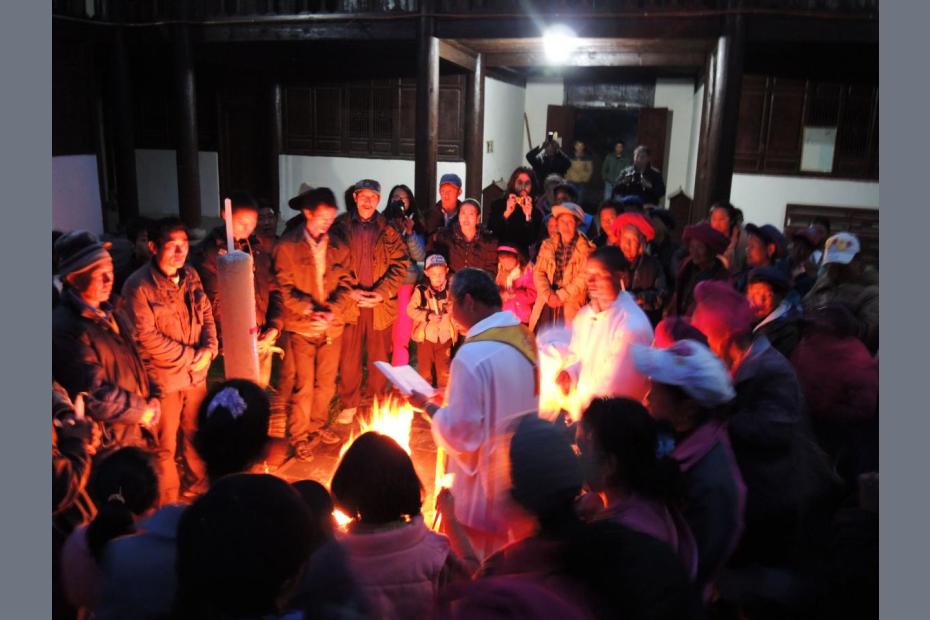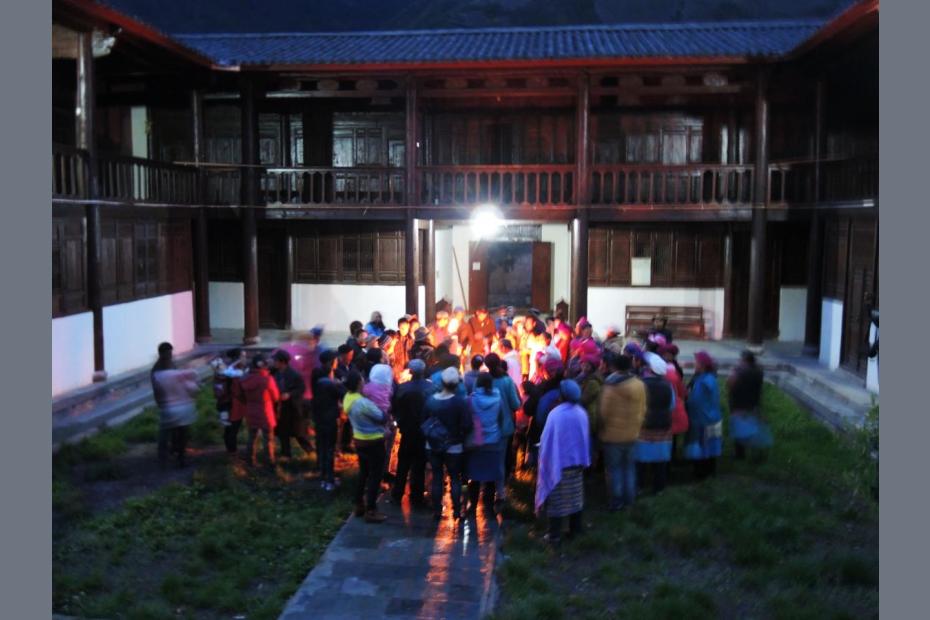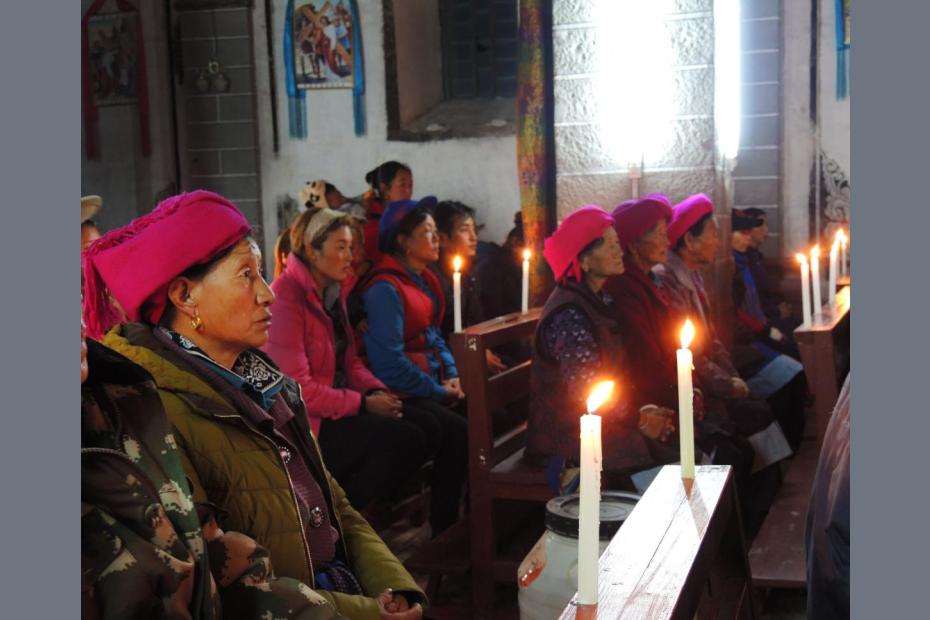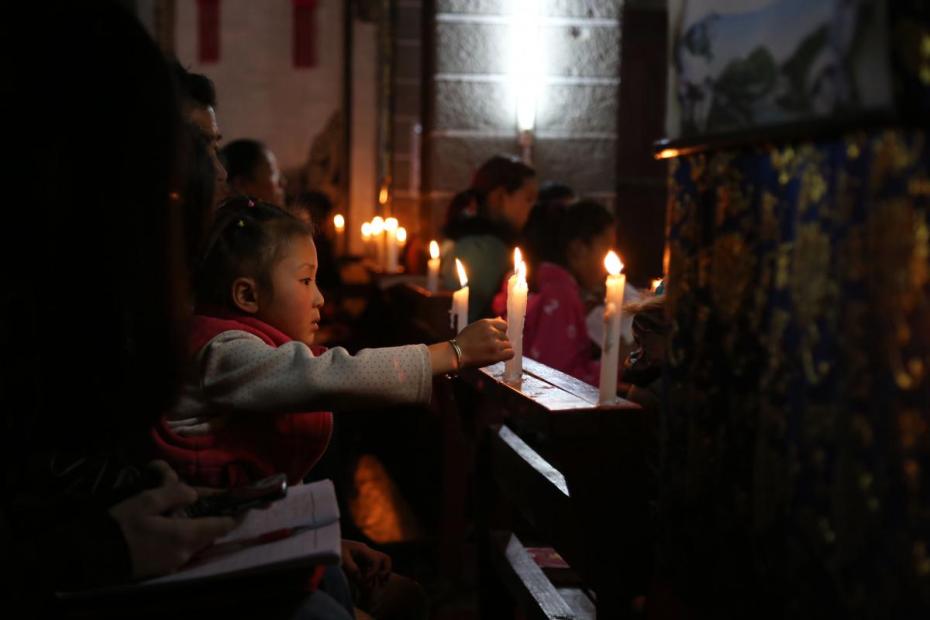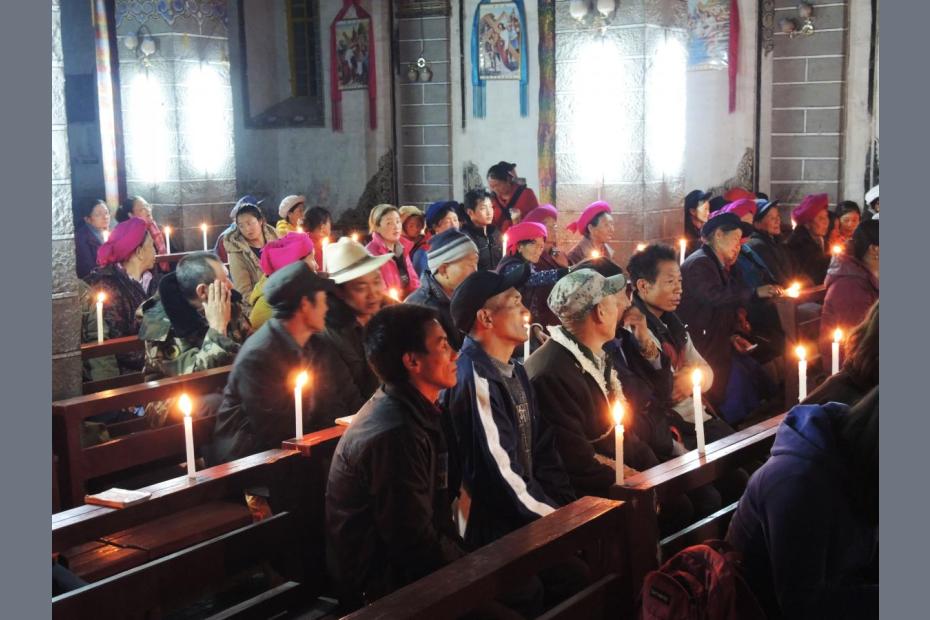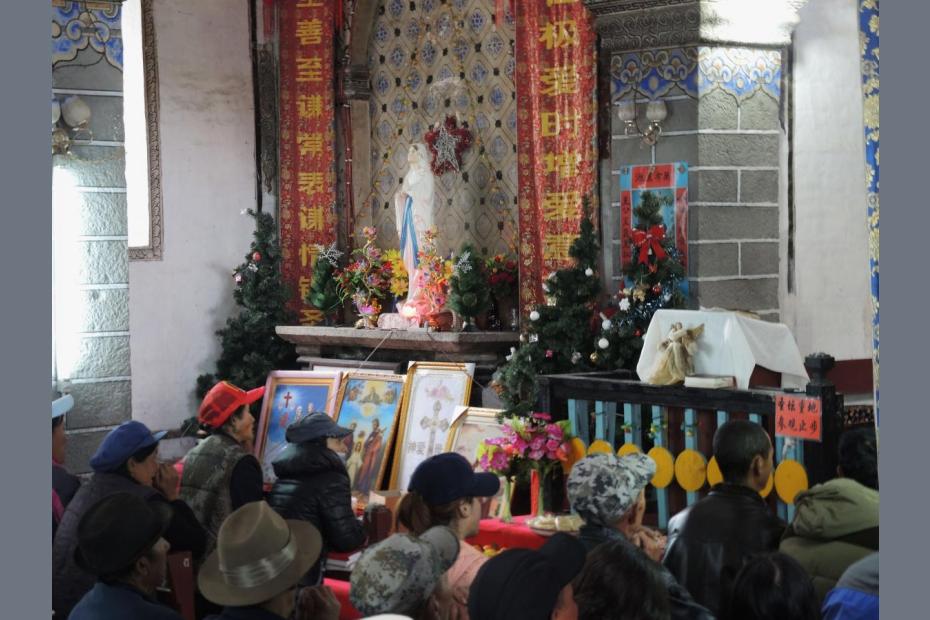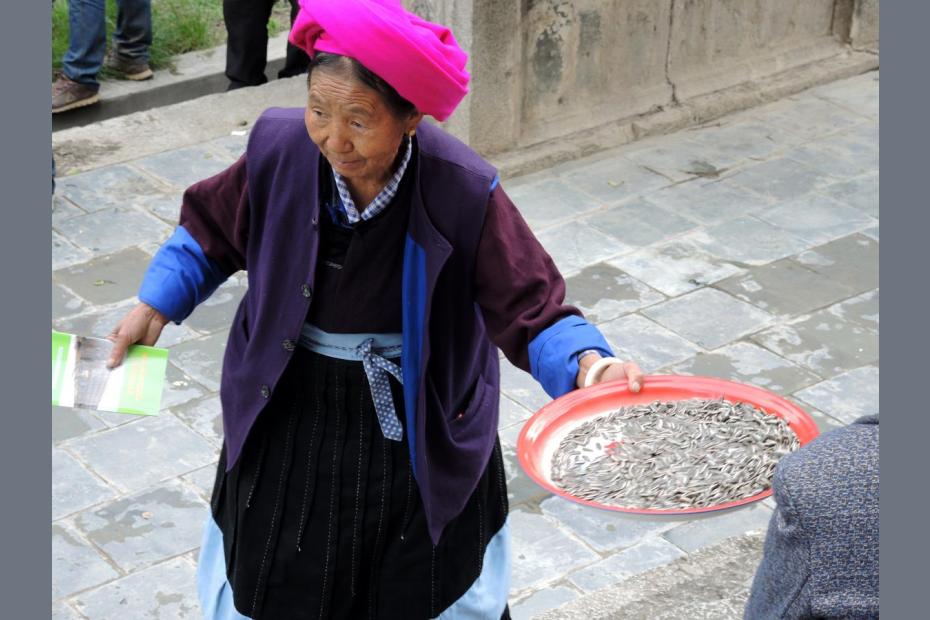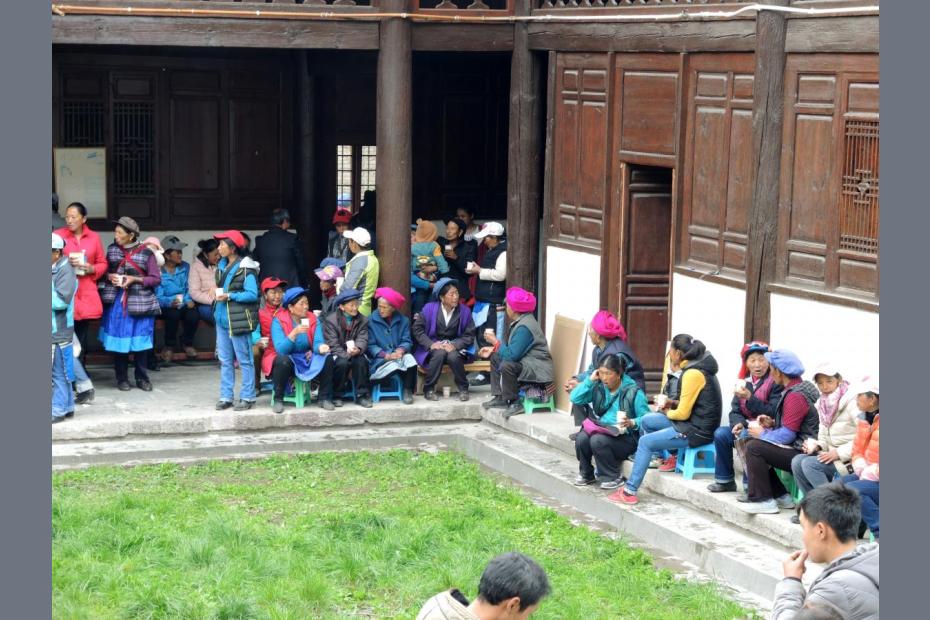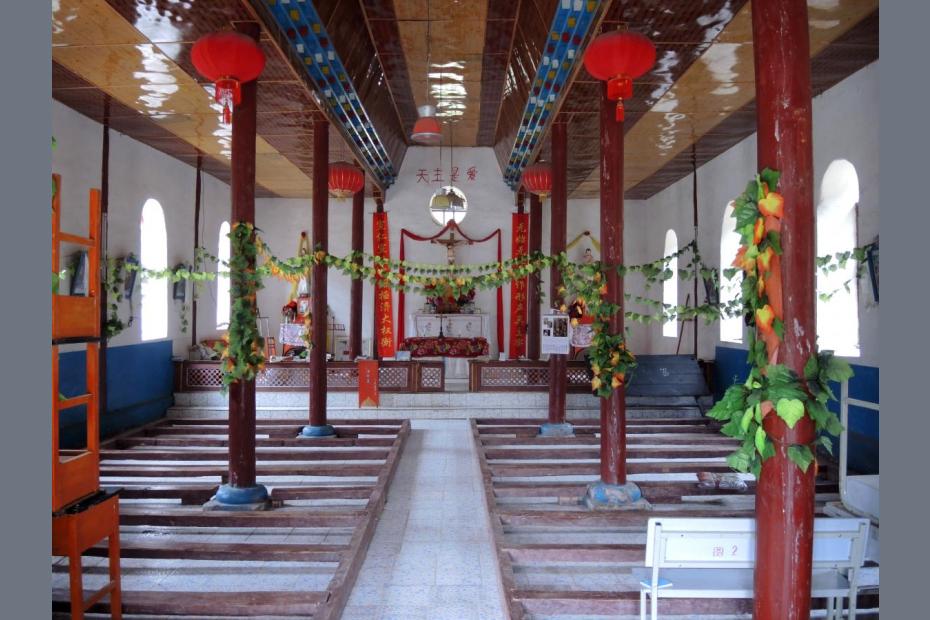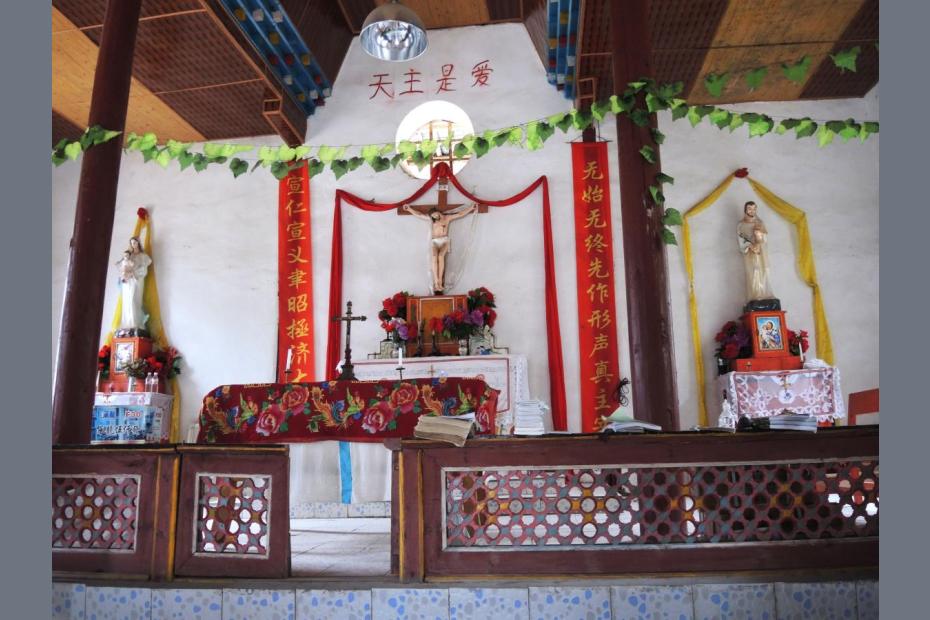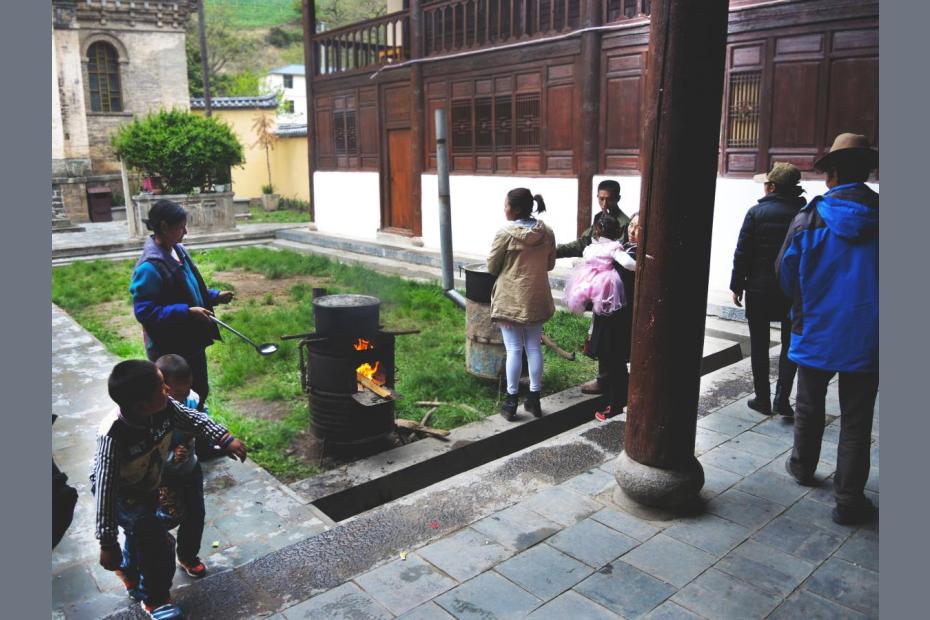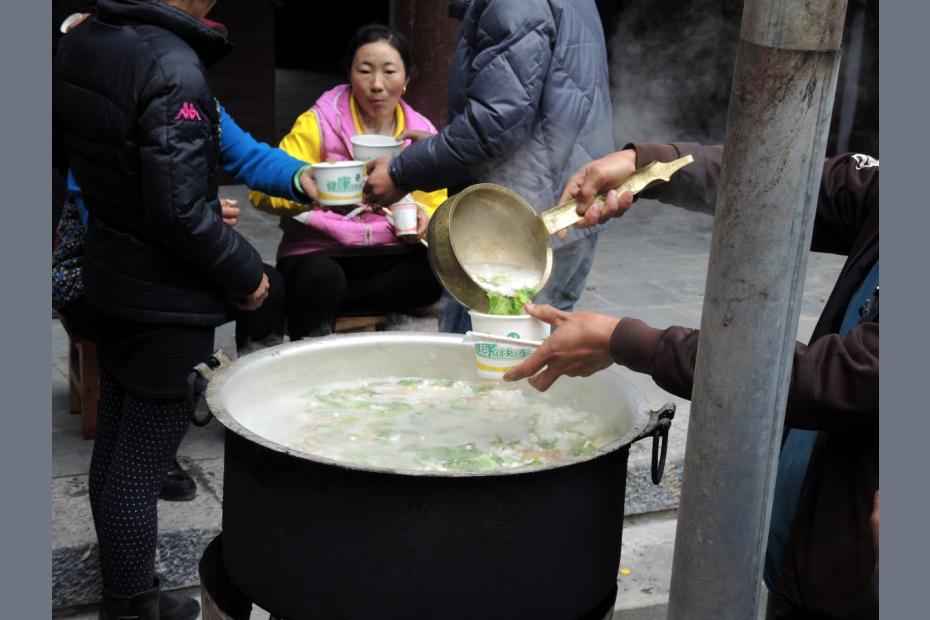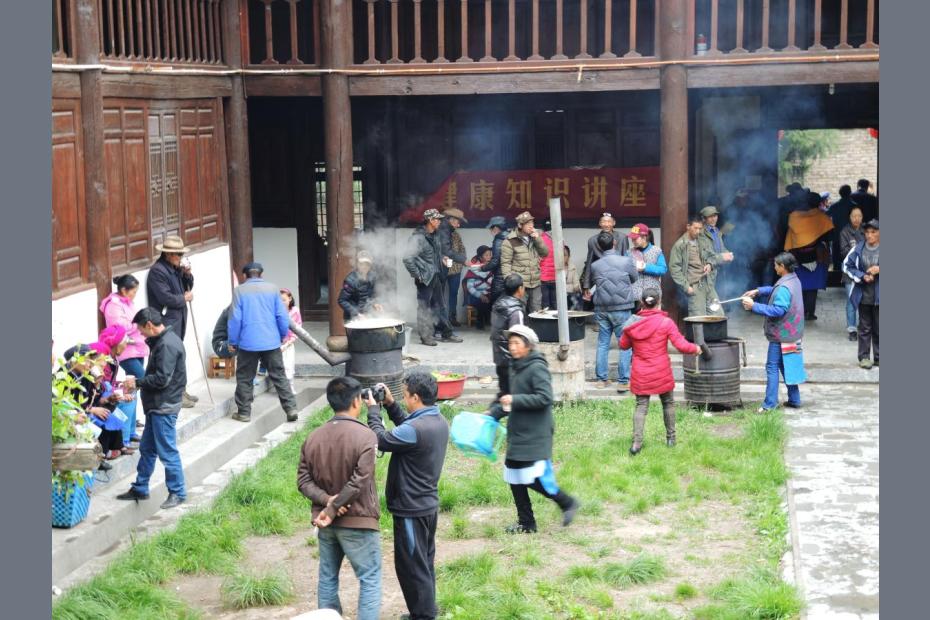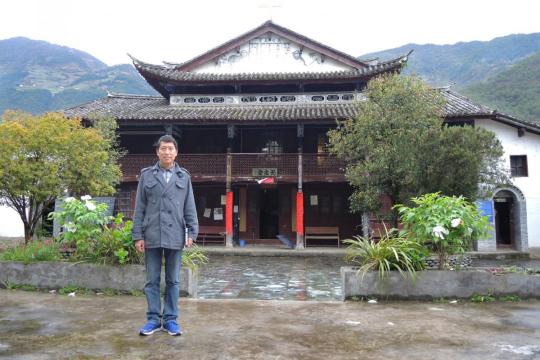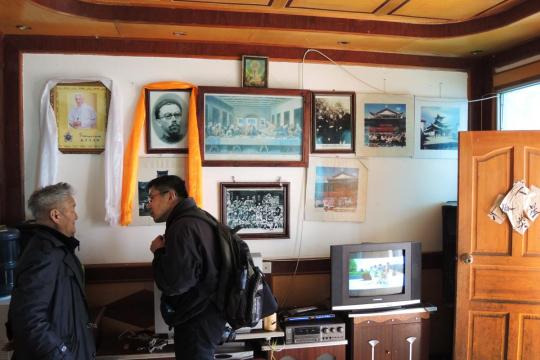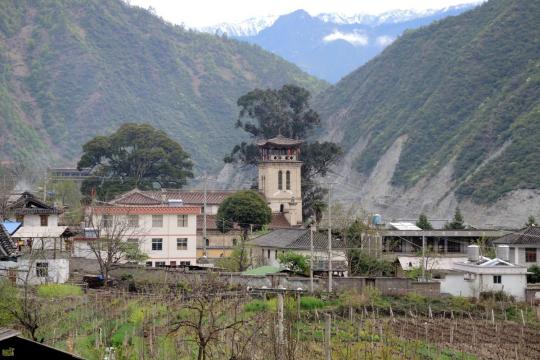Worship in the Tibetan and Naxi villages of the Lancang River valley entails two very different ways of praying — a rich and indigenized tradition of sung chant that is perhaps unique in the Catholic world, and an imported form of liturgical worship that at times seems to be not quite “at home” yet there. Ironically, the indigenized form is a pre-Vatican II legacy devised by missionaries from Europe, whereas the liturgical form, the Pauline Mass, is led by a Han Chinese priest.1
From the mid-1960s to mid-’70s, when religious practice was totally suppressed during the Cultural Revolution, Catholics in China had little, if any, knowledge of the liturgical reforms that had taken place following the Second Vatican Council. In the 1980s and ’90s, as Chinese Catholics rebuilt their churches, they reinstated liturgical practices that were important to them before they were separated from the rest of the Church. In most of China, this meant a return to the Latin Mass and other mid-20th century devotional practices. Vatican II liturgical reforms were officially adopted in China in 1994, but only fully became part of regular worship in Cizhong when its first full-time priest was assigned in 2008.2 Smaller village churches, such as in Cigu and Niuren, still have only intermittent visits from priests.
The communities at Cizhong and Niuren also inherited another worship legacy — Tibetan-language Catholic chants composed in a local musical style under missionary leadership. The style of these chants is strikingly different from the chant tradition of Europe, and the chants were written to be sung by laypeople, not by the clergy. Only a few hymnals survived the Cultural Revolution in these villages (none of the originals survives there today), but this musical tradition was re-embraced in the Lancang Valley Tibetan Catholic communities following the reopening of Chinese society in the 1980s, and new hymnals were printed. Today that chant, sung in common by the lay community, is a vital part of local worship.
Where there is no priest available, as at Niuren at the 2015 Easter Sunday service (see video), public worship is entirely chanted. This small community, having rebuilt its own church, also usually leads its own prayer, praying in a style that draws deeply on local musical culture, and on the legacy of the original missionaries who are still held in high esteem there. No laypeople go up to the altar area during the service. All the worshippers face the altar as they chant, and they often do so in a sitting position on very low risers that evoke the positions of Buddhist monks.
At Cizhong, where there is a resident priest, worship entails both chant and Pauline liturgy. During Holy Week 2015, the combination was hardly seamless. To an outsider’s eyes, it juxtaposed the chant as the form of prayer that “belonged” to the lay villagers, and the Pauline liturgy as an importation that had yet to really take root in laypeople’s worship.
Holy Thursday began with vigorous chants by the laity, while the pastor moved around setting up the space. The pastor, who did not speak Tibetan, never took part in the chant. The liturgy was clearly the priest’s prerogative, and he spent a good deal of time directing rather than presiding. The excerpted videos from Cizhong on this page convey some sense of that.
Worshippers were most fully and attentively engaged when chanting the prayers they knew, particularly before the start of Mass, or during Friday Stations of the Cross when they chanted after the pastor, Fr. Yao, announced each station. Villagers were clearly unfamiliar and seemingly a bit bemused and detached from some aspects of the liturgy. Children wandered up and down the aisle, congregants sometimes talked while Fr. Yao preached, and the preparation for foot washing turned a bit chaotic. Fr. Yao, with the help of two young women who served as assistants in the congregation, often was busy directing congregants and servers what to do next. There were exceptions to this, such as during the Holy Thursday liturgy when they all gathered in the dark around Paschal candle. Fr. Yao, who seemed quite dedicated to his mission, recognized all this, but also said that he accepted the disorder in a good spirit because he wanted to do whatever he could to bring in and hold on to worshippers.
Ironically, the Cizhong parishioners’ current situation under a Chinese priest and worshipping using the revised liturgy may be less indigenized than what their parents or grandparents experienced before 1950. Their Swiss missionaries apparently excelled at local languages and, judging by the preserved images and accounts in the tiny museum, were well connected to the people and travelled to the villages. The Tridentine liturgy would have been in Latin, but their prayer book and chants were in Tibetan. Today, the priest is Chinese, but as a Han Chinese who leads the liturgy and preaches in Putonghua (Standard Chinese), he did not seem to always connect with the villagers.
The posture of piety
To Catholics from many cultures, many of the visual cues of worship at Cizhong and Niuren might contravene some expectations of what Catholic devotion ought to look like. The differences are worth observing, though not as a judgmental critique, but because they give us a chance to think about the “posture” of piety in different cultures. The posture here surely differs from the stillness and precision of movement that embodies reverence in a German Catholic setting, or the spontaneity and movement that are thought to be signs of spiritual authenticity in a charismatic setting like Jamaica or India.
One explanation for this "posture," of course, is the legacy described above — the novelty of the Pauline liturgy (particularly Holy Week liturgies) since Fr. Yao’s arrival in 2008, compared to the significance of the chants as part of the missionary legacy and as culturally resonant forms of worship. Other factors also may play a role. Fr. Yao preached and said Mass in Chinese, which is not a first language for most locals, whereas the chants are in Tibetan. Still, there is probably more going on here. At Niuren, the layman leading the chanted Easter service stepped out at one point to take a cell phone call, an action that would be objectionable in many cultures’ religious situations.
It seems reasonable to suggest that the posture of piety for Tibetan and Naxi Catholics in these churches is particular to the local cultural context, a religious context that precedes the missionaries. Within the worldwide Catholic community, expectations about how one embodies devotion certainly vary from place to place, and this community is no exception.
Much more to learn about the chants
Most local Catholics presumably never knew much, if any, Latin even before the missionaries were expelled, so it may be that the chants were always central to lay worship in the region. In the present context, however, the chant legacy set up by the missionaries and the new practice combining chant and liturgy make for an interesting worship experience.
A good deal more work deserves to be done on the chants, and at this point we have not even been able to translate them. It is unclear how or whether these prayers have changed since the missionaries’ departure. In Cizhong and Niuren, written prayers were only available at Cizhong as a booklet printed in a pinyin form, i.e. in a Latin-alphabet written form of Tibetan. One villager said that his mother had burned the last local copy of the original prayer book about a decade ago, because it had become so filthy that it was unbefitting something sacred. Another villager, asked by Standard Chinese speakers about the words in the chants, responded that they were "too complicated" to translate. Nonetheless, most lay people seemed to know the chants from memory, as most people knew them in the missionaries' time.
Women and men divided
In these villages, the church is largely divided by gender during worship. At Cizhong and Niuren, women occupy the left side of the church, the side of the Mary altar, and men occupy the right side, by St. Joseph's altar. After communion, men and women stop to bow before each respective altar. At Cizhong, as attendance grew, women filled in from the back of the men’s side. The liturgies are mostly comprised of women, in part because many men are said to be working away from the village. Some of the men at worship on Holy Thursday apparently came from other villages, but were in Cizhong because they were working on the major highway, bridge, tunnel and dam projects along the river. Easter is not a holiday in this part of the world, and workers would not easily get the time off to travel home.
At Holy Week in Cizhong, parishioners twice brought bags of grain to be blessed for planting (it was springtime) and large sacred images to be blessed for their homes. These were left in front of the Mary altar, and Fr. Yao blessed them during the liturgy. This did not happen at the priestless Easter Sunday service at Niuren.
Following the Niuren service, worshippers gathered outside to talk for a while before returning home to their houses for a celebratory meal, though they indicated that there were no traditional foods that they ate on Easter. At Cizhong, they gathered in the church courtyard for hours to enjoy food that had been prepared beginning the day before.
In China, life and death by a river dammed
Matthew Chitwood, a fellow with the Institute of Current World Affairs, provides an updated account of Holy Week in Cizhong, China. In the years since we first visited the village, infrastructure development has taken its toll on the farmland and rural character of Cizhong. A dam on the Mekong River provides needed hydropower but displaced a number of communities who are resettling on Cizhong's fertile rice fields and vineyards. It's also depleted the region's tourism industry.
- 1Han Chinese is the ethnic group that compromises the vast majority (more than 90 percent) of Chinese, whereas the peoples in Cizhong and the villages near it are overwhelmingly from ethnic Tibetan, Naxi and Lisu peoples.
- 2According to his brother, former seminarian Xu Guoyong from Xiaoweixi village visited many churches after the government started to allow freer religious practice. He was finally ordained in 1989. Still, his village is a good distance down the river from Cizhong. A four-hour trip today, the journey’s length was much longer in those days before the new roads. Other priests apparently helped to restore the Catholic communities as well, but the story of restoring and rebuilding Catholic churches seems very much a story of lay leadership and petitioning local authorities for compensation and permission to rebuild.
